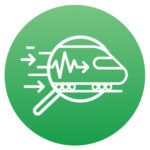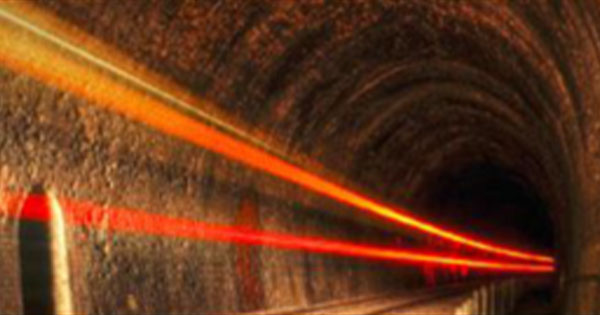Fibre Optic Acoustic Sensing to monitor track and train

Relevant RTS critical priority(ies):
Reliable and easy to maintain
Targeted interventions, based on the condition of rolling stock and fixed assets, are a key mechanism to drive efficiency and minimise the downtime for maintenance and repairs, optimising the availability of the railway for customers. But monitoring solutions can be costly and generate issues of their own with maintenance and reliability.
Fibre Optic Acoustic Sensing (FOAS) technology has wide-ranging potential to monitor assets network-wide. It is a highly challenging technology from which to create a monitoring service for everyday use but the prize is substantial. FOAS uses the dark fibres in the communications cables running trackside to listen for vibrations along the track. These could be caused by trains or trespassers for example. Data signals passed through the cables are changed by the vibrations to create data ‘signatures’. Computers learn to interpret these signatures by applying an algorithm to distinguish between the signatures produced under normal operating conditions and signatures produced when something is awry.
FOAS has been tested in the lab and equipment and algorithms were trialled, calibrated and tested at the Rail Innovation and Development Centre at Melton, Leicestershire to prove the concept. Network Rail’s Wales route sponsored a four-month live service trial of FOAS in autumn 2019 covering 47km of track in Cardiff to provide early warning of potential wheel flats on some of the most vulnerable fleet types – diesel multiple units without a Wheel Slip Protection system. An Agile approach was used to create momentum, getting results early to rapidly iterate system development with the operational team. Several rounds of calibration led to an improved early warning of a wheel defect but further improvement is needed. The experience brought operational teams and technical developers together and gave confidence that this solution could work particularly if FOAS is combined with other data.
To that end, a competition was launched in Spring 2020 to find market-led solutions combining to meet four use cases: train movement and position reporting; rail and wheel defects identification; level-crossing safety management; and trespass and trackside presence detection. The competition applies a Design Contest approach that allows promising solutions to be developed at pace and the most promising solutions taken into a test whilst complying with public procurement legislation and regulation. This Design Contest has attracted substantial interest from innovators and shows the opportunity from business-driven innovation where a new mechanism has been developed and implemented to collaborate across the value chain.
FOAS has yet to make it into everyday service but the industry has now reached the stage of trials against four clear use cases on the RIDC test tracks, and where innovators are required to collaborate, but also stand to be rewarded for results. FOAS forms a key part of an ambition to build a trackside ‘Internet of Things’ with the fibre optical communications cabling at its heart, further moving the railway towards remote inspection and condition-based maintenance being widely used to replace periodic inspection and maintenance.
Back



